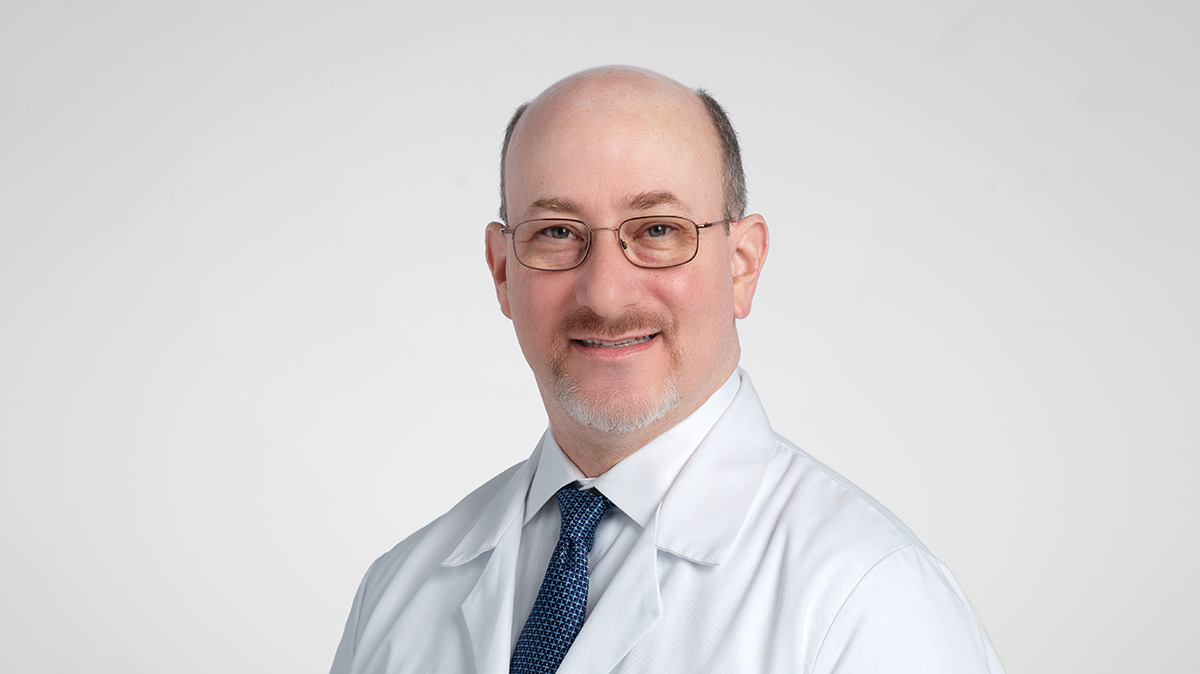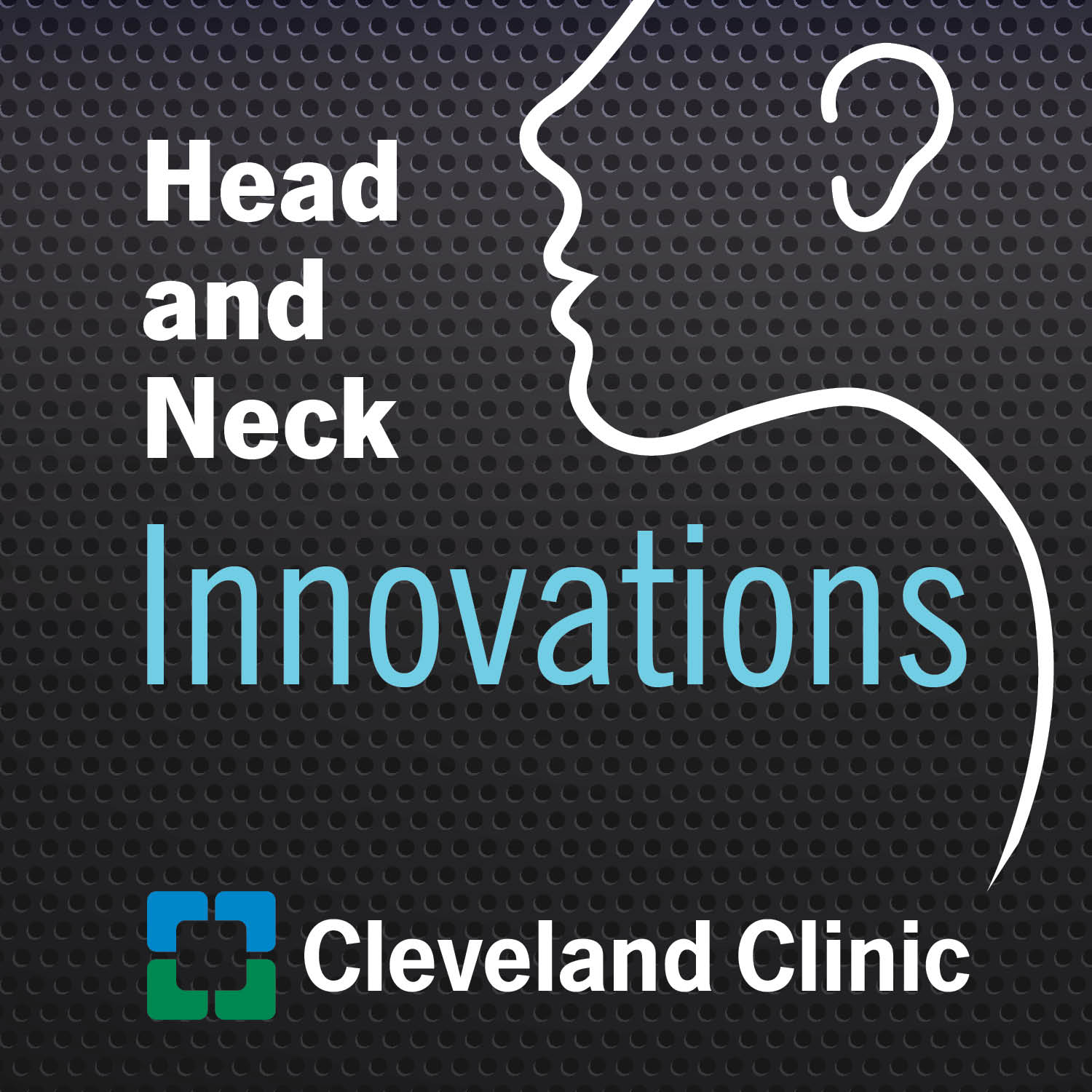Communicating with Confidence: Updates in Speech Language Pathology, Part II

Part II of our discussion with Martin Brodsky, PhD, ScM, CCC-SLP centers around new research in the advancement of treating dysphagia and swallowing disorders.
Subscribe: Apple Podcasts | Spotify | Buzzsprout
Communicating with Confidence: Updates in Speech Language Pathology, Part II
Podcast Transcript
Paul Bryson: Welcome to Head and Neck Innovations, a Cleveland Clinic podcast for medical professionals exploring the latest innovations, discoveries, and surgical advances in otolaryngology.
Thanks for joining us for our new episode of Head and Neck Innovations. I'm your host, Paul Bryson, Director of the Cleveland Clinic Voice Center. You can follow me on Twitter @PaulCBryson, and you can get the latest updates from Cleveland Clinic Otolaryngology – Head and Neck Surgery by following at @CleClinicHNI. That's C-L-E clinic H-N-I.
I'm joined again today by Dr. Martin Brodsky, Section Head of Speech Language Pathology here at Cleveland Clinic, to continue our discussion on speech language pathology and speech and swallowing disorders. If you haven't listened to our previous episode, please be sure to give it a listen.
Well, I wanted to change gears a little bit and I wanted to get more information from you on some of the research programs that you've developed and plan to translate here and what you see as the opportunities here for research and speech language pathology. So, I'll turn it over to you. Can you share with us what your core research interests are and the opportunities that you hope to grow and expand here?
Martin Brodsky: Okay. It's very difficult for me to give up the previous work that I've done in laryngeal injury and swallowing that is associated with intubation in the ICU. It's a definite passion of mine. I stumbled across it a little bit in that K Grant that I told you I had.
So, the brief history is that I was funded on the K Grant from NIH, and it was all about getting ahead of swallowing disorders and, more specifically, aspiration before the patient is extubated. In my not-too-distant history prior to that, I saw a number of patients, I scoped a number of patients, and we saw the laryngeal injury that was occurring. Didn't pay a lot of attention to it, and neither did the literature in any form. But it was so apparent what was going on that it just simply couldn't be ignored.
I can tell you from that study specifically, of the 32 patients that came into it, I think all, but one patient had laryngeal injury post extubation.
Paul Bryson: And for our listener, let's tease out what laryngeal injury means to you. And I certainly see laryngeal injury after a long hospitalization or an intubation at times.
Martin Brodsky: Yeah.
Paul Bryson: So, what exactly were you looking at?
Martin Brodsky: So initially, I was simply looking for cuts, bruises, ulcerations, granulation tissue.
Paul Bryson: Motion impairment perhaps.
Martin Brodsky: Motion impairment came into it. Always as a speech language pathologist, we think about the six cranial nerves involved with swallowing, right? One of the cranial nerves, of course, is the recurrent laryngeal nerve from the vagus, and motion is a big thing. If you can't close the airway, you can't be expected to save the airway from anything getting into it. So, it's always a big focus, and we think more along the lines of paralysis than we do anything else.
Paralysis is rare. It's really rare. It's certainly more common after cardiac surgery, but after a general medical intubation, not really there. It's very, very rare. What's more common is stenosis, more common, maybe some neuromuscular problems, maybe a lag cord, maybe some edema keeping the cords from moving as well as they normally would.
Paul Bryson: What about laryngopharyngeal sensation after an intubation or a prolonged intubation?
Martin Brodsky: Yeah. That can be quite altered. It's interesting, because if you take a look at the literature, and I find this fascinating, these numbers keep on coming up. And unfortunately, it's not predicted and it's not predictable. If you think about stroke, 50 percent of patients are going to aspirate, and 50 percent of them are going to silently aspirate. So about 25 percent will silently aspirate to the ones who are aspirating, right?
Interestingly enough, it seems to be about the same for intubation. The numbers are quite similar. So right now, the literature is pointing in the direction, almost a self-fulfilling prophecy in that we knew this all along, but we needed the data to prove it.
And it's really, at least in part, about the size of the endotracheal tube. The larger the tube, the more likely you're going to aspirate and the more likely you're going to silently aspirate. So, what appears to be the cutoff, and we've seen at least two or three studies say this right now, the study we're working on will maybe be the fourth if somebody doesn't beat us to the punch, is basically the cut point is about 7.5 and 8.0 tubes. If you're at a 7.5 or lower, you have immediately decreased the risk of aspiration post extubation. If you are at 8.0 or higher, you have significantly statistically increased the risk for those patients.
Now, I like to say, why are we putting a garden hose in places where straws should live? Okay?
Paul Bryson: Right. It's hard. As we read our own literature, there's a lot of agreement, certainly in my own practice with airway stenosis or motion issues of the vocal folds, things like that. You're preaching to the choir.
What strategies have you seen and what strategies do you have to socialize some of these findings to our colleagues in other disciplines where they might be the providers placing the tube or the proceduralists or intensivists that are at the bedside caring for these critically ill patients?
Martin Brodsky: It's interesting you ask the speech language pathologist this question, because by the time we typically find these patients, the patients already intubated and we're dealing with the aftermath. We are definitely not on the front end where the respiratory therapist or the intensivist is asking, give me the number eight tube. That is not the case that. In fact, the speech language pathologist is nowhere at the bedside when the patient is crashing.
So really from where I stand as a referral from intensivists, a referral from any physician basically, is I can educate. And that's what I've spent a lot of time doing over many, many years. And colleagues of ours and me and many others have spent a lot of time talking to intensivists, respiratory therapists, anesthesiologists, surgeons, even the emergency department physicians and paramedics who are still placing tubes. We're trying to get through to these folks that smaller tubes are better.
We continue to hear the same arguments. Now, I may sound like I'm getting on a soapbox here, so pull me down if you feel I'm getting there. One of the biggest arguments that I hear all the time is, but we're anticipating a bronchoscopy on this patient. We need the number 8.0 tube. And I'm still saying to myself, why? It's a half millimeter. Why do you need the eight when the 7.5 will do?
Paul Bryson: Yeah. Yeah. It's just dogma.
Martin Brodsky: I don't get it.
Paul Bryson: Yeah. It's just dogma.
Martin Brodsky: Okay?
Paul Bryson: Yeah.
Martin Brodsky: The other thing that I've heard is that there are very specific protocols, vent protocols. When you're in the ICU, if you have this patient whose height and weight is X and you have this tube that's Y, the vent settings are Z. Its very protocol driven.
My point to that, not to sound ridiculous, is there are at least three buttons on the ventilator, the one that controls the oxygen, the one that controls the airflow, and the one that controls the pressure. Can't they individually be changed?
Paul Bryson: They probably can.
Martin Brodsky: So, I think it comes back to the question of really wanting to let go of what we've always done and embrace the things that will improve patients' lives foreseeably.
Paul Bryson: And I commend you. Part of that journey of educating and exploring was of the multi-disciplinary nature of your work. And for looking to perhaps change dogma and change these rote behaviors, it's bringing these clinicians and intensivists into the research fold, because I think what you'll find is that they're also curious about it. And the conclusions and things like that are often surprising. And it has a cascading effect, I think, when they're already in the mix and they are in the research program and protocols. So, I think that's very exciting for our group as you get your program underway.
Martin Brodsky: And it's very exciting for me. I can tell you almost without exception, I'd be willing to say without exception, there may have been hesitancy, but there's a lot of enthusiasm and there's a lot of people backing this work. And I've been very fortunate through the years that I was at Johns Hopkins to be able to work with those collaborators and for them to see the vision and for them to be able to help us move forward in the direction of it, advancing the science to improve patient outcomes.
I expect no less here at Cleveland Clinic, and I've already had a very positive response from the physicians, including yourself, by the way, for everybody to get on board and to continue this vision just simply in a different facility. Cleveland Clinic is one of the leaders in healthcare across the world. Why can't we do it here? This would be a great opportunity. And I know I'm already working with colleagues who are very excited and want to move forward along these lines and make changes and improve patient lives.
Paul Bryson: I agree. It's a very exciting time. We're glad you're here, and we're certainly looking forward to the future of our dysphagia program and looking not only on the inpatient side, but the outpatient side and helping define the outcomes that matter and understanding the injury mechanisms that can be modified.
Martin Brodsky: It's very exciting. It's a little bit intimidating, because the work ahead of me is exponentially larger than what's behind us. We're cutting new ground here, and I'm just not sure what to expect.
Paul Bryson: Well, I think you can expect a lot of collaboration and a lot of people that are invested in yours and the team's success.
Martin Brodsky: That's awesome. I look forward to it.
Paul Bryson: Thank you again, Dr. Brodsky. I've really enjoyed our multi-week discussion, and I'm excited about your ongoing research in laryngeal injury.
As a reminder to our listeners, for more information on speech language pathology at Cleveland Clinic, please visit clevelandclinic.org/speechtherapy. That's clevelandclinic.org/speechtherapy. And to speak with a specialist or submit a referral, please call 216.444.8500. That's 216.444.8500.
Dr. Brodsky, thanks for joining Head and Neck Innovations.
Thanks for listening to Head and Neck Innovations. You can find additional podcast episodes on our website at clevelandclinic.org\podcasts, or you can subscribe to the podcast on iTunes, Google Play, Spotify, SoundCloud, or wherever you listen to podcasts.
Don't forget, you can access real-time updates from Cleveland Clinic experts in otolaryngology head and neck surgery on our Consult QD website at ConsultQD.ClevelandClinic.org/headandneck. Thank you for listening and join us again next time.



